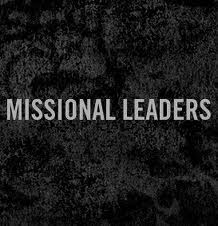 There is much talk today about being missional. The idea is grounded in the notion that we move towards people, not that we require them to move towards us. It carries with it the understanding of empathy that allows us to meet people where they are with the love and compassion of Jesus Christ. But what type of leader does it take to lead people into this experience? I offer up three critical traits from 2 Corinthians 4:1-10 and 2 Corinthians 1:8-11.
There is much talk today about being missional. The idea is grounded in the notion that we move towards people, not that we require them to move towards us. It carries with it the understanding of empathy that allows us to meet people where they are with the love and compassion of Jesus Christ. But what type of leader does it take to lead people into this experience? I offer up three critical traits from 2 Corinthians 4:1-10 and 2 Corinthians 1:8-11.
1. An identity rooted in the fact that we have been redeemed and called This is the sure knowledge and understanding that we as Christ followers have been rescued and commissioned. We have been bought and sent. The gospel is not a collection of good sayings-it is the announcement of good news. It is the proclamation of redemption that carries with it the privilege and responsibility of transference. A leader must be secure in who they are as a redeemed loved child to ask others to follow their calling into missional engagement.
2. A belief in the gospel as the ultimate reality of life There are many, many competing philosophies of life in the world today. There always have been. The gospel stands alone. Again, the gospel is the proclamation of good news, of a historical, life altering event. It is the announcement of Christ’s death, burial and resurrection that can set us free from slavery to sin and death. All other world philosophies offer improvement theories. The gospel offers freedom and transformation. There is no greater need or greater reality. A leader must surely believe this to lead others into the morass and messiness of missional engagement. This bedrock belief also provides the passion to the message.
3. A ridiculous faith in God’s presence and goodness I believe these two traits provide the foundation for faith. The clear understanding that God is completely good (no imperfections and no injustice) and always present (he is with us in every situation and setting) allows us to weather the missional storms. I only call this type of faith “ridiculous” because it is other worldly and will be attacked by the world. A leader must continually point followers to this reality about the nature and character of God.
What are your thoughts on other key traits?












